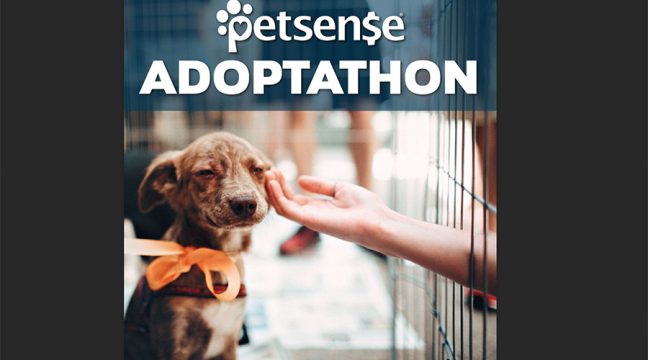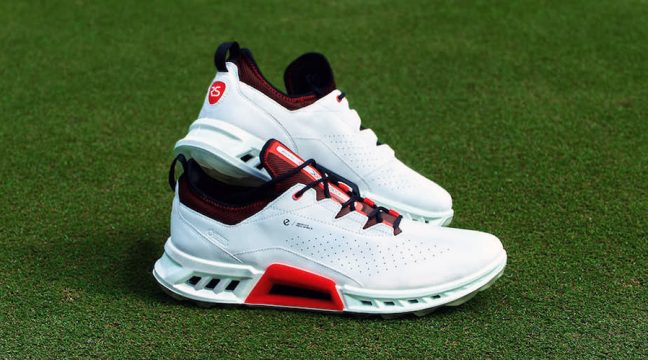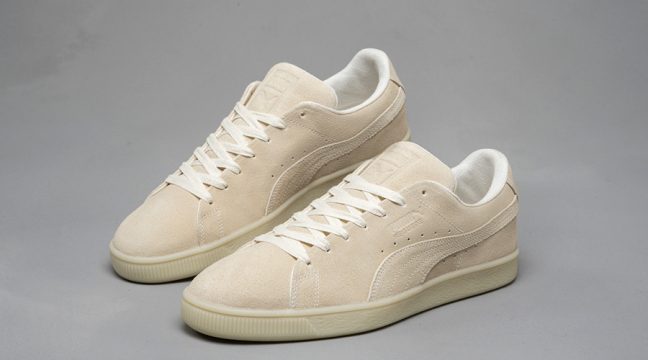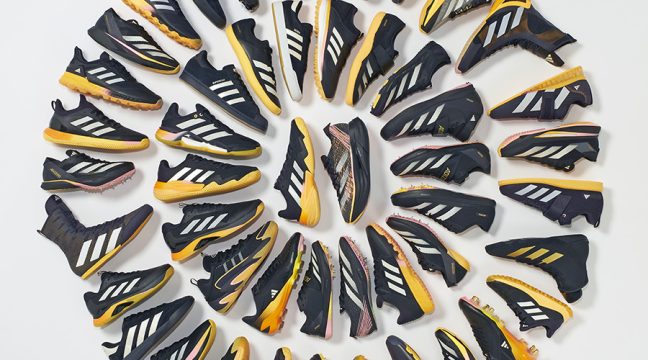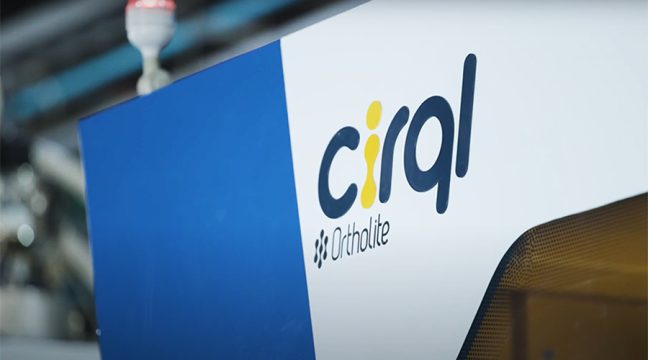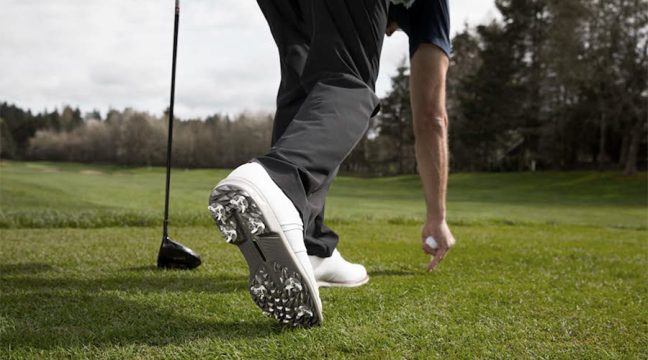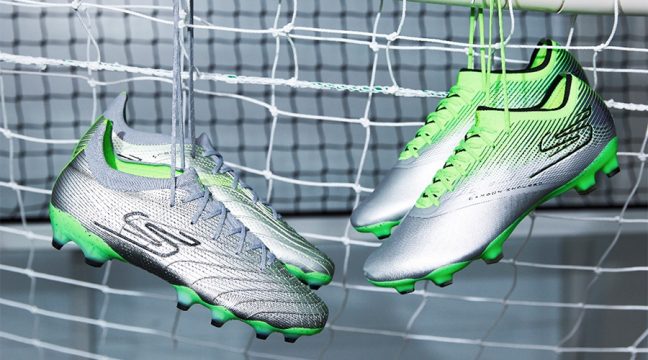PUMA AG reported another healthy quarter across the board in Q1, with both sales and profits increasing in double-digits for the period. The company is starting to see a bit of a shift in energy though, as sales growth in the Americas and the U.S. easily outpaced Europe, a region that also saw a quite-unfamiliar-until-now decline in the backlog for the next six months. (Click Here to View Chart)
Total consolidated sales increased 11.9% to 496.5 million in the first quarter from 443.8 million in the year-ago period, reflecting a 13.7% increase when reported in currency-neutral terms. Measured in Euros, Footwear sales were up 10.6% to 338.2 million from 305.9 million in Q1 last year. Currency-neutral Footwear sales were up 12.1% for the period, while Apparel grew 12.4%, and Accessories jumped 32.5% on the same basis. In Euro terms, Apparel sales increased 11.2% to 124 million from 111.2 million last year and Accessories climbed 30.1% to 34.7 million, compared to 26.7 million in the prior year period.
By region, Europe sales were up by 7.8% to 338.0 million in the first quarter from 313.6 million in the year-ago period. Europe represented 68.1% of consolidated sales in Q1, down from 70.7% of sales in Q1 last year. Gross margins in Europe were up 220 basis points to 56.9% of sales from 54.7% last year. Backlog in Europe was clearly a sore spot in the overall report for the quarter, as open future orders at quarter-end declined 5.5% to 522 million. Management pointed to a number of factors for the softening of the Europe business, with a tough business market in their two biggest markets cited as the primary cause.
Puma chairman and CEO Jochen Zeitz said the company will not alter its strategy to chase the volume in the region as some competitors are currently doing. He said that the strategy has worked well so far as the brand moved from the number seven spot in market share to the third spot. Herr Zeitz said he believed their market share in Europe is now roughly 10%.
Third, the company pointed to a lack of major sporting events this year as a key issue as well, an issue that will play well for them next year as the ramp up for the World Cup 2006 in Germany begins. Last year at this time, the company, along with cross-town rival adidas and others, got a nice bump from the Euro Championships and the Olympics. Finally, a shift in product orders to Q1 also impacted the Q2 business as retailers booked more goods earlier knowing they would not be able to chase this year. Europe backlog was up 9.4% at year-end.
Puma expects the backlog weakness in Europe to translate into lower sales in Q2 as well, a reality the company faces due to their strategy that limits discounting to drive sales and a lack of additional inventory available for fill-in business.
The Americas is apparently where the action is as that same strategy begins to pay off in larger future orders from the big guys and continued brand integrity across multiple channels.
The Americas led all organic growth, with currency-neural sales growing 37.7% for the period. In Euro terms, sales still increased 29.5% to 94.2 million from 72.8 million in Q1 last year, growing to 19.0% of total sales from 16.4% of the total last year. Gross margin improved 130 basis points to 46.1% of sales from 44.8%. Total backlog in the region was up 48% in currency-neutral terms, or a 38.8% increase to 170 million when measured in Euros.
U.S. sales, which are part of the Americas region, increased 29.5% in U.S. Dollars to $96.2 million, compared to $74.3 million in the year-ago period. Signaling a strong Q2 and Back-to-School on the horizon, futures backlog was up 36.3% to $190 million at the end of March. Zeitz said he saw the brand and the market in the U.S. were “much stronger” than six months ago.
Asia/Pacific sales increased 3.2% in currency-neutral terms, but dipped 1.5% to 43.8 million when measured in Euros. Gross margins jumped 290 basis points to 50.9% of sales. Backlog was up 9.9% to 90 million, or a 15% gain in Euro terms. Puma controls their own destiny in Australia and Japan for Footwear and Accessories, but Zeitz said the markets in between are seeing strong growth. The total Asia region saw direct and licensed sales grow a combined 28% for the period on a currency-neutral basis.
Africa/Middle East region sales jumped 59.4% to 20.5 million, accounting for 4.1% of sales versus 2.9% last year. Backlog surged 50% at quarter-end.
Worldwide branded sales, which include consolidated and license sales, rose 16.3% to 639 million for the quarter ended March 31, compared to 549 million in Q1 last year, or an 18.1% increase in currency-neutral terms. Zeitz told analysts on a Tuesday call that Footwear, Apparel, and Accessories business represented about 15% of the 142 million in Licensed sales.
The vast majority of licensed sales was done in what he called “no-core” categories like watches, etc
Gross margin improved 170 basis points to 53.4% of sales from 51.7% in the year-ago period, with 120 basis points of the gain coming from FX rate benefits. Apparel margins jumped four percentage points to 53.4%, due in large part to a shift to Asia production, and Accessories margins improved five percentage points to 51.1% of sales. Footwear margins improved 70 basis points to 53.6% from 52.9% of sales in Q1 last year.
SG&A rose 140 basis points to 28.4% of sales, due to the expansion of owned-retail activities and additional personnel expenses resulting from the management incentive program.
Owned-retail, which is now based out of new offices in Switzerland, has seen growth primarily focused on the U.S. market. Puma finished the quarter with 51 stores in the portfolio and expects to continue its strategy of opening 5 to 10 stores a year. Comps were up in high-single-digits and owned-retail sales represented about 9% of total Puma consolidated sales.
Net earnings grew by 13.5% to 90.9 million, or 5.63 per diluted share, versus 80.1 million, or 4.88 per diluted share, in the first quarter last year.
Inventories at quarter-end were up 8.1% to 189.9 million versus 175.7 million at the same time last year. A/R was up 14.8% to 387.3 million.
Total company backlog was up 4.6% to 812 million ($990 mm), or a 6.2% increase in currency-neutral terms. Footwear orders were up 4.1% (6.1% currency-neutral) to 555 million and Apparel futures were up 1.4% (1.4% c-n) to 207 million ($253 mm), but the most robust growth came in the Accessories category, which saw a 27.4% (29.5% c-n) gain in backlog to 51 million ($62 mm).
Looking ahead, Puma sees mid- to high-single-digit growth for the full year and reaffirmed earlier EPS guidance which also indicated mid- to high-single-digit growth. The one change came in gross margin, which Zeitz said should be in the 51% to 52% range for the year, with margins narrowing a bit in the back half on a shift in product mix to more performance product.
>>> The foundation is laid in the States, now its time to build the house…
| Puma AG | ||||||
| First Quarter Results | ||||||
| (in $ millions) | Group Sales | Backlog Change | ||||
| 2005 | 2004 | Change | Neutral* | Change | Neutral* | |
| Group Sales | $651.6 | $554.5 | 11.9% | 13.7% | 4.6% | 6.2% |
| Europe | $443.6 | $391.8 | 7.8% | n/a | -5.5% | n/a |
| Americas | $123.6 | $91.0 | 29.4% | 37.7% | 38.8% | 48.0% |
| U.S.** | $96.2 | $74.3 | n/a | 29.5% | n/a | 36.3% |
| Asia/Pacific | $57.5 | $55.6 | -1.6% | 3.2% | 9.9% | 15.0% |
| Africa/Mid East | $26.9 | $16.1 | 58.9% | 59.4% | 50.0% | n/a |
| Footwear | $443.9 | $382.2 | 10.6% | 12.1% | 4.1% |
PUMA Nails Down Another Solid Quarter in Q1 as U.S. Business Moves Out Front…PUMA AG reported another healthy quarter across the board in Q1, with both sales and profits increasing in double-digits for the period. The company is starting to see a bit of a shift in energy though, as sales growth in the Americas and the U.S. easily outpaced Europe, a region that also saw a quite-unfamiliar-until-now decline in the backlog for the next six months. Total consolidated sales increased 11.9% to 496.5 million in the first quarter from 443.8 million in the year-ago period, reflecting a 13.7% increase when reported in currency-neutral terms. Measured in Euros, Footwear sales were up 10.6% to 338.2 million from 305.9 million in Q1 last year. Currency-neutral Footwear sales were up 12.1% for the period, while Apparel grew 12.4%, and Accessories jumped 32.5% on the same basis. In Euro terms, Apparel sales increased 11.2% to 124 million from 111.2 million last year and Accessories climbed 30.1% to 34.7 million, compared to 26.7 million in the prior year period. By region, Europe sales were up by 7.8% to 338.0 million in the first quarter from 313.6 million in the year-ago period. Europe represented 68.1% of consolidated sales in Q1, down from 70.7% of sales in Q1 last year. Gross margins in Europe were up 220 basis points to 56.9% of sales from 54.7% last year. Backlog in Europe was clearly a sore spot in the overall report for the quarter, as open future orders at quarter-end declined 5.5% to 522 million. Management pointed to a number of factors for the softening of the Europe business, with a tough business market in their two biggest markets cited as the primary cause. Puma chairman and CEO Jochen Zeitz said the company will not alter its strategy to chase the volume in the region as some competitors are currently doing. He said that the strategy has worked well so far as the brand moved from the number seven spot in market share to the third spot. Herr Zeitz said he believed their market share in Europe is now roughly 10%. Third, the company pointed to a lack of major sporting events this year as a key issue as well, an issue that will play well for them next year as the ramp up for the World Cup 2006 in Germany begins. Last year at this time, the company, along with cross-town rival adidas and others, got a nice bump from the Euro Championships and the Olympics. Finally, a shift in product orders to Q1 also impacted the Q2 business as retailers booked more goods earlier knowing they would not be able to chase this year. Europe backlog was up 9.4% at year-end. Puma expects the backlog weakness in Europe to translate into lower sales in Q2 as well, a reality the company faces due to their strategy that limits discounting to drive sales and a lack of additional inventory available for fill-in business. The Americas is apparently where the action is as that same strategy begins to pay off in larger future orders from the big guys and continued brand integrity across multiple channels. The Americas led all organic growth, with currency-neural sales growing 37.7% for the period. In Euro terms, sales still increased 29.5% to 94.2 million from 72.8 million in Q1 last year, growing to 19.0% of total sales from 16.4% of the total last year. Gross margin improved 130 basis points to 46.1% of sales from 44.8%. Total backlog in the region was up 48% in currency-neutral terms, or a 38.8% increase to 170 million when measured in Euros. U.S. sales, which are part of the Americas region, increased 29.5% in U.S. Dollars to $96.2 million, compared to $74.3 million in the year-ago period. Signaling a strong Q2 and Back-to-School on the horizon, futures backlog was up 36.3% to $190 million at the end of March. Zeitz said he saw the brand and the market in the U.S. were “much stronger” than six months ago. Asia/Pacific sales increased 3.2% in currency-neutral terms, but dipped 1.5% to 43.8 million when measured in Euros. Gross margins jumped 290 basis points to 50.9% of sales. Backlog was up 9.9% to 90 million, or a 15% gain in Euro terms. Puma controls their own destiny in Australia and in Japan for Footwear and Accessories, but Zeitz said the markets in between are seeing strong growth. The total Asia region saw direct and licensed sales grow a combined 28% for the period on a currency-neutral basis. Africa/Middle East region sales jumped 59.4% to 20.5 million, accounting for 4.1% of sales versus 2.9% last year. Backlog surged 50% at quarter-end. Worldwide branded sales, which include consolidated and license sales, rose 16.3% to 639 million for the quarter ended March 31, compared to 549 million in Q1 last year, or an 18.1% increase in currency-neutral terms. Zeitz told analysts on a Tuesday call that Footwear, Apparel, and Accessories business represented about 15% of the 142 million in Licensed sales. The vast majority of licensed sales was done in what he called “no-core” categories like watches, etc Gross margin improved 170 basis points to 53.4% of sales from 51.7% in the year-ago period, with 120 basis points of the gain coming from FX rate benefits. Apparel margins jumped four percentage points to 53.4%, due in large part to a shift to Asia production, and Accessories margins improved five percentage points to 51.1% of sales. Footwear margins improved 70 basis points to 53.6% from 52.9% of sales in Q1 last year. SG&A rose 140 basis points to 28.4% of sales, due to the expansion of owned-retail activities and additional personnel expenses resulting from the management incentive program. Owned-retail, which is now based out of new offices in Switzerland, has seen growth primarily focused on the U.S. market. Puma finished the quarter with 51 stores in the portfolio and expects to continue its strategy of opening 5 to 10 stores a year. Comps were up in high-single-digits and owned-retail sales represented about 9% of total Puma consolidated sales. Net earnings grew by 13.5% to 90.9 million, or 5.63 per diluted share, versus 80.1 million, or 4.88 per diluted share, in the first quarter last year. Inventories at quarter-end were up 8.1% to 189.9 million versus 175.7 million at the same time last year. A/R was up 14.8% to 387.3 million. Total company backlog was up 4.6% to 812 million ($990 mm), or a 6.2% increase in currency-neutral terms. Footwear orders were up 4.1% (6.1% currency-neutral) to 555 million and Apparel futures were up 1.4% (1.4% c-n) to 207 million ($253 mm), but the most robust growth came in the Accessories category, which saw a 27.4% (29.5% c-n) gain in backlog to 51 million ($62 mm). Looking ahead, Puma sees mid- to high-single-digit growth for the full year and reaffirmed earlier EPS guidance which also indicated mid- to high-single-digit growth. The one change came in gross margin, which Zeitz said should be in the 51% to 52% range for the year, with margins narrowing a bit in the back half on a shift in product mix to more performance product.
|

